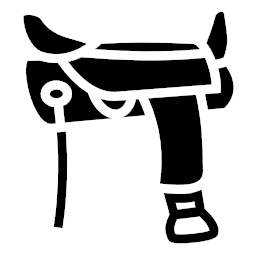Yeah I’m stretching for an aphorism, don’t @ me.
There’s a term you may have heard in the context of tabletop games, usually in the context of combat-focused tactical games, but not always, and sometimes in the context of videogames or TCGs, which is the idea of Action Economy.
But what is, an action economy?
An Action Economy, in the broadest possible way, is the way in which a limited pool of resources in the context of a play experience are distributed to competing interests within that space. What this usually means is that if a game gives you a limited number of things you can do, and a limited amount of opportunities to do them, typically, being able to get more than your ‘fair share’ of actions is going to give you an advantage.
And this is a really broad way to describe it! Not every game has this – Blackjack, for example, is a game where every player in a hand has the same total amount of hands in a round (and yes you can split and double, but that’s still all from the same hand). In a game like Starcraft you can get all sorts of actions in during the timing of the game – they won’t all be good, or meaningful, or have a positive effect on the outcome of the game, but you can have a lot of actions.
In turn-based games, like Magic: The Gathering, the ‘action economy’ is a bit less constrained – it uses resources like mana and cards to keep you limited on doing too much in a single turn. Action economies are much more important in games like Wingspan, where you have a limited number of actions every game, meaning any game piece that lets you take extra actions has a direct contribution towards you maybe winning the game.
Didn’t come to talk to you about Wingspan though.
Came to talk to you about pets.
In 4th edition D&D, you could have a pet. There were ways to do it, including buying one with gold, and typically, they sucked. Pets purchased with gear money didn’t tend to scale, didn’t tend to have good stats, and weren’t usually worth the money unless you were very coldhearted and planned on buying a lot that were, to you, cheap, as a sort of expendable supply of bodies. Particularly, though, they weren’t that good because to direct one of your pets to do something was a standard action, and you only got one of them. Plus, all your best actions, usually, were standard actions!
This was a deliberate thing, as part of the systems of the game were about dividing up certain types of power. Gear was good! Gear was bought with gold, and gold could be pretty freely available. The best gear was the stuff that interacted with your own powers and abilities, like weapons and armour, but that didn’t mean that was everything – there were all sorts of things that were cheap and expendible, to give you some control over what happened to you in short term. Investments for the future versus immediate needs, that kind of thing.
Instead, if you wanted a good pet you ideally wanted it to come from a class feature. You could do that with some classes, like the druid and the ranger’s pet features, which present the problem of taking a dope class that can do cool things and replacing them with a much less cool thing. The Cavalier’s mount feature—which they only got thanks to a Dragon magazine supplement that kinda feels like a rules patch that’s so good it highlights how the thing it’s fixing sucks a little, but the mount can’t really behave like a pet. Most of the mount’s rules are a ‘mount ability’ which means they don’t do anything unless you’re mounted on them and have the mounted combat feat. That feat, by the way, didn’t do anything meaningful aside from letting you access those abilities.
There’s got, he says, in infomercial cadence, to be a better way!
And there are better ways! In the world of Themes, the two default themes for power level are the Guardian (‘do you do melee and have a good melee basic?’) and the Fey Beast tamer (‘are you anything else?’) The Fey Beast Tamer let you have a pet, and also let you use that pet in a way that didn’t bust the action economy, but did smooth over its roughest spots. If you moved, the Fey Beast moved as well. The Fey Beast could take its own opportunity attacks. If you had a reaction you could pass on to the Fey Beast, you could use it or they could use it, which meant for a lot of characters, the Fey Beast represented a solid block of something you could put in melee to impede your enemies, but which enemies typically did not want to spend actions attacking. It was harder to hurt than you were, after all.
The Fey Beast Tamer sticks onto anything you want, and that’s a very important thing for improving flexibility of all those classes. The Fey Beast can do a lot of different things, but it also serves as a perfectly solid little creature for a supporter to enable. A baby owlbear is swinging 1d12 attacks with a +2 bonus over normal damage, which means if you’re granting them attacks as say, a Warlord or Bard, you’re actually getting a pretty respectable chunk of damage on a unit you can transport around the battlefield safely.
Another important thing about the pet is the Fey Beast doesn’t just get you other potential actions (in the form of movement and opportunity attacks) it can also serve as a way to block spaces. It’s a material entity that you can use to occupy spaces that would otherise be left available for enemies, and they can punish opponents for entering them and doing things. You can even use them to harrass spellcasters, by using your movement action to move you into one square, then the other into a square near an artillery unit and attack them when they make a ranged attack or move.
This runs into a problem I’ve described when talking about the Spelldancer, which is there is a powerful option that players are naturally pulled towards. It’s not as outsized as the Spelldancer—it’s broken and players will discover how it’s broken pretty conveniently—but it is one of the best options, power-wise, which players are going to be pulled towards pretty easily because it’s not just powerful, it’s also cool.
It’s a good sign for how 4e is balanced that this doesn’t really present any kind of a problem. Characters can have cool powers that maybe slow combat down a little for a cool pet, and the pets don’t represent an outrageous power balance. Characters with supporting powers can benefit from something under their control, but it’s hard to push them to the limit like they’re a type of Radiant Mafia enabler, or a Wintertouched agent. They’re just a body, and a way to get a tiny bit of extra actions.
It’s hard to complain about the power of the Fey Beast Tamer in this context, then, because it’s a cool thing, it’s a pet, pets are a good way to express character, and those pets are safe—even if they die in combat, it’s just a disappearing into the feywild, with them being resummonable.
This article was reposted from Talen’s personal blog.
You can find the original at Press.exe




